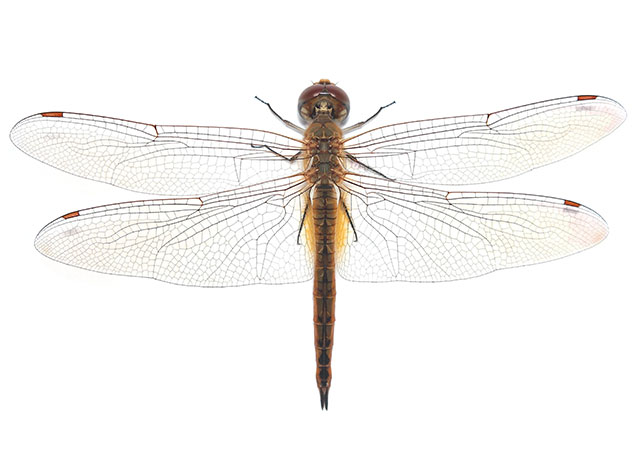Giant flying insect discovered at Arkansas Walmart actually from the Jurassic era
03/22/2023 / By Kevin Hughes

A large winged insect first discovered by an entomologist at a Walmart in Arkansas was actually from the Jurassic era.
Michael Skvarla, the current director of Pennsylvania State University‘s (Penn State) Insect Identification Lab, first spotted the insect at the side of a Walmart building in Fayetteville, Arkansas. He initially misidentified it as an average dragonfly when he first saw it in 2012.
“I remember it vividly,” the entomologist said in a press release. “I thought it looked interesting, so I put it in my hand and did the rest of my shopping with it between my fingers. I got home, mounted it, and promptly forgot about it for almost a decade.”
It was only after he taught an online class at Penn State in the fall of 2020 that the importance of his find came to light. He had no idea that a rare giant lacewing (Polystoechotes punctata) that dates from the Jurassic period was part of his collection. The specimen he had represents an eastern North American population of lacewings that has long gone unnoticed and unreported.
Students in Skvarla’s class scrutinized insect specimen samples from his personal collection using microscopes. He initially introduced the Walmart specimen as an “antlion,” but realized his mistake after seeing the insect’s huge wingspan – almost 50 millimeters – that was more typical of P. punctata.
Skvarla and his group verified the insect’s identity using molecular DNA analysis and found its historic importance. The specimen was then included in the collection at Penn State’s Frost Entomological Museum to be shared with other scientists.
Lacewing disappearance shrouded in mystery
Two of Skvarla’s students in Penn State remembered the importance of the finding.
“We were watching what Dr. Skvarla saw under his microscope, and he’s talking about the features [of the specimen] and then just [kind of] stops,” recounted entomology doctoral candidate Codey Mathis. “We all realized together that the insect was not what it was labeled, and was in fact a super-rare giant lacewing.”
“I still remember the feeling. It was so gratifying to know that the excitement doesn’t dim, the wonder isn’t lost. Here we were making a true discovery in the middle of an online lab course.”
“A finding like this really highlights that, even in a run-of-the-mill situation, there are still a tremendous number of discoveries to make about insects,” said Louis Nastasi, another doctoral candidate. He added that the discovery “doesn’t always hold that same kind of grasp on people that maybe it did 100 years ago.”
Giant lacewings were once discovered across the whole continent, but by the 1950s, the insect had been ruined in the eastern part of North America. Their disappearance is mostly covered in mystery, with some assuming that they may have vanished because of increasing light pollution, new predators such as huge ground beetles and non-native earthworms introduced into the environment that altered the soil’s composition. (Related: Study: Habitat destruction to blame for the demise of monarch butterflies in California.)
Skvarla can only guess why the lacewing vanished from this area. However, he mentioned that the insect could have flown a short hundred meters after being attracted by the grocery store lights.
Follow Discoveries.news for more stories like this.
Watch this video about the 10 most dangerous discovered insects.
This video is from the Interesting Facts channel on Brighteon.com.
More related stories:
Newfound cuckoo wasp species mimics other insects’ “language” to raise and feed its young.
Study suggests ants can be trained to detect cancer in urine.
Sources include:
Submit a correction >>
Tagged Under:
breakthrough, discoveries, Ecology, environment, extinct species, giant lacewing, insects, Jurassic era, Michael Skvarla, North America, Penn State, research, Walmart, weird science
This article may contain statements that reflect the opinion of the author



















